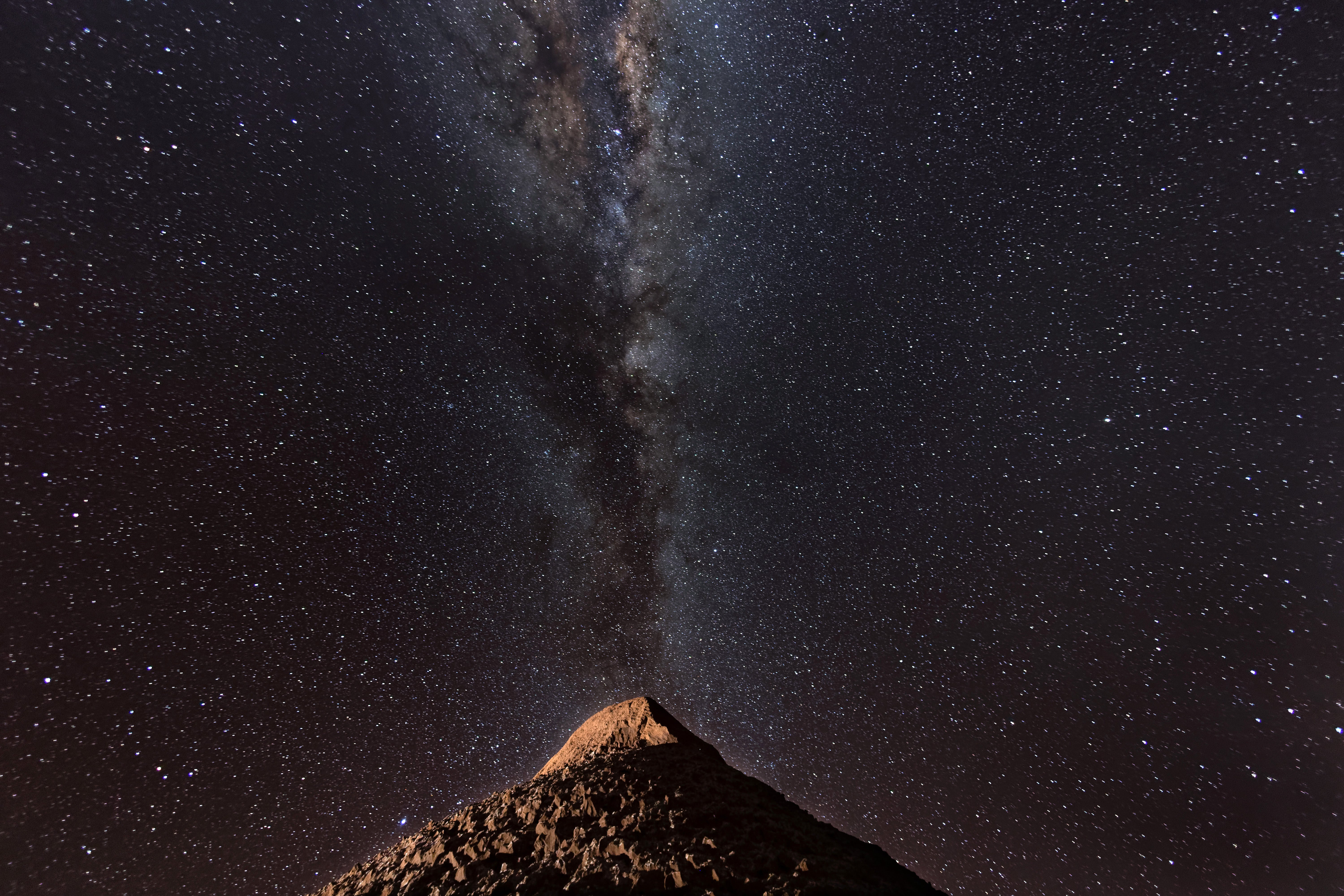A mysterious, long object is flying towards the black hole at the centre of the galaxy
Scientists think they might finally know what the unexplained object that has mystified them for years might be

An object is being lurking near the supermassive black hole at the centre of our galaxy – and scientists might finally know what it is.
The object, known as X7 and stretched out near our Milky Way’s black hole, has mystified scientists for decades. Researchers have speculated that it might have broken free of a nearby structure, for instance, and puzzled over whether it was always such a long shape or if it had been shaped by the black hole that it is sliding towards.
Scientists now believe that it could be a cloud of gas and dust that was thrown out when two stars collided.
In the time since, the object known as X7 has been stretched out, and is gradually being pulled apart by the force of the black hole. In the next few decades, it will be ripped to pieces, disintegrate, and the dust and gas that made it up will be pulled into the black hole.
“No other object in this region has shown such an extreme evolution,” said Anna Ciurlo, a UCLA assistant researcher and the paper’s lead author. “It started off comet-shaped and people thought maybe it got that shape from stellar winds or jets of particles from the black hole.
“But as we followed it for 20 years we saw it becoming more elongated. Something must have put this cloud on its particular path with its particular orientation.”
The object is about as big as 50 Earths, and is orbiting around the black hole over a period of 170 years. It might never finish that orbit, however, since researchers expect it will approach the black hole around 2036 and then be ripped into it.
“We anticipate the strong tidal forces exerted by the galactic black hole will ultimately tear X7 apart before it completes even one orbit,” said co-author Mark Morris, UCLA professor of physics and astronomy.
The new research could also help explain other mysterious phenomena, like X7, that are known as G objects. They look like gas and behave like stars – though tend to behave in less extreme ways than X7.
An article describing the findings, ‘The Swansong of the Galactic Center Source X7: An Extreme Example of Tidal Evolution near the Supermassive Black Hole’, is published in The Astrophysical Journal.
Subscribe to Independent Premium to bookmark this article
Want to bookmark your favourite articles and stories to read or reference later? Start your Independent Premium subscription today.

Join our commenting forum
Join thought-provoking conversations, follow other Independent readers and see their replies